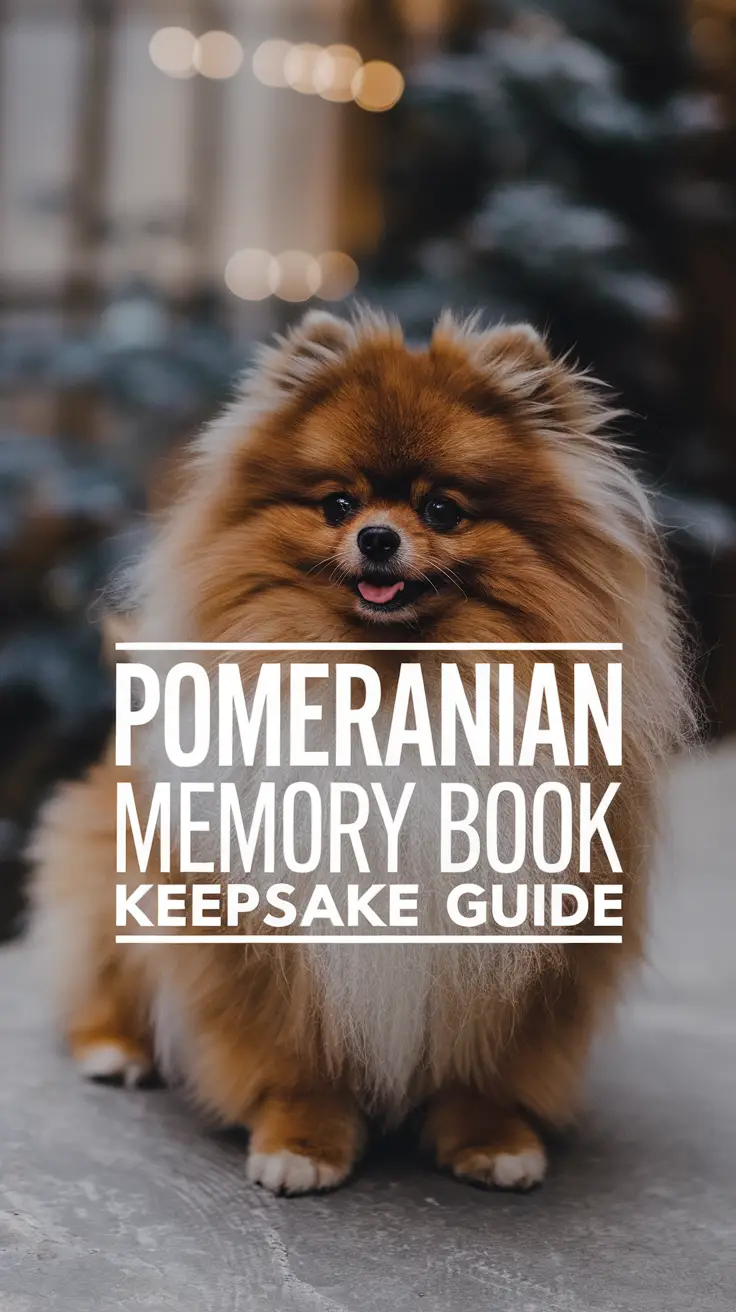You’re considering whether your fluffy little companion could become more than just a beloved pet – perhaps a certified emotional support animal who could help you navigate life’s ups and downs. As someone who’s shared my home with Sash for several years now, I can tell you that Pomeranians possess some truly remarkable qualities that make them excellent emotional support dogs, though they come with their own unique considerations.
Quick Summary:
- Pomeranians excel at reading human emotions and providing comfort through their naturally affectionate temperament
- Their compact size makes them ideal companions for travel and living situations where larger dogs aren’t practical
- Training and socialization are crucial to manage their protective instincts and occasional stubbornness
The Pomeranian Personality: Built for Bonding
Sash has this uncanny ability to sense when I’m having a rough day before I even realize it myself. She’ll abandon her favorite sunny spot by the window and position herself right next to me, those dark button eyes fixed on my face with an intensity that would make a therapist jealous. This isn’t coincidence – it’s the Pomeranian’s natural empathy at work.
According to the American Kennel Club, Pomeranians were bred as companion dogs, which means centuries of selective breeding have enhanced their ability to bond deeply with their humans. Dr. Sarah Mitchell, a veterinary behaviorist, notes that “toy breeds like Pomeranians often develop exceptionally strong attachments to their owners, making them naturally attuned to emotional changes and highly motivated to provide comfort.”
The breed’s intelligence ranking places them among the top 25 smartest dog breeds, which translates to their ability to learn and respond appropriately to their owner’s emotional needs. Sash learned my daily routines within weeks and now anticipates my moods better than some of my closest friends do.
Size Matters: The Advantages of a Pocket-Sized Companion
One of the biggest advantages Pomeranians have as emotional support dogs is their portability. At 3-7 pounds, they’re welcome in most housing situations and can accompany you on flights in the cabin. I’ve traveled with Sash multiple times using an airline approved pet carrier, and her presence has made potentially stressful situations significantly more manageable.
| Pomeranian Size Benefits | Practical Applications |
|---|---|
| Weighs 3-7 pounds | Can fly in cabin, fits in carrier under airplane seat |
| 7-12 inches tall | Suitable for apartments and small living spaces |
| Minimal space requirements | Can provide comfort in hospital rooms, dorm rooms, or offices |
| Easy to lift and hold | Can be placed on lap or bed for close comfort |
Their small stature also means they’re less intimidating to people who might be nervous around dogs, making them excellent ambassadors for emotional support animals in public spaces.
Training Challenges: The Reality Check
Now, I’d be doing you a disservice if I didn’t mention that Pomeranians can be delightfully stubborn. Sash once spent an entire week refusing to use her designated potty area because I had the audacity to move her food bowl six inches to the left. Their independent streak, while charming, requires consistent training and patience.
Here are the main training considerations for Pomeranian emotional support dogs:
- Barking Management: Pomeranians are naturally alert and vocal – essential for managing this in public settings
- Socialization: Early and ongoing exposure to different people, animals, and environments prevents anxiety and reactivity
- Basic Obedience: Commands like “quiet,” “stay,” and “leave it” are crucial for public access
- Impulse Control: Teaching patience and calm behavior in stimulating environments
The good news is that their food motivation and desire to please make training quite achievable. Sash mastered basic commands within a month using positive reinforcement techniques, though she still occasionally pretends not to hear me when squirrels are involved.
Health Considerations and Longevity
Pomeranians typically live 12-16 years, which means you’re looking at a long-term companion who can provide consistent emotional support throughout various life stages. However, they do have some breed-specific health concerns to consider:
- Luxating patella (kneecap dislocation)
- Tracheal collapse
- Heart problems
- Dental issues due to their small mouths
Regular veterinary care and maintaining a healthy weight are crucial. Sash sees our vet every six months, and I’ve found that keeping her at an optimal weight has prevented many of the joint issues common in the breed. Using small dog joint supplements has also been beneficial for her overall mobility.
The Daily Reality: What to Expect
Living with a Pomeranian emotional support dog means accepting that you’ll never go to the bathroom alone again, your lap will rarely be unoccupied, and you’ll become fluent in the subtle differences between their “I need attention,” “stranger danger,” and “treat please” barks.
Sash provides emotional support in ways I never expected. During a particularly stressful period at work, she began bringing me her toys when I’d sit at my computer for too long – her version of enforcing mandatory break time. This kind of intuitive care is what makes Pomeranians exceptional emotional support animals.
Their grooming needs also provide a meditative routine that many owners find therapeutic. The daily brushing sessions with a quality grooming brush have become a calming ritual that benefits both of us, though Sash would argue that the benefit is entirely hers since she gets undivided attention and treats.
Making the Decision
Choosing a Pomeranian as an emotional support dog requires honest self-assessment. They thrive with owners who can provide consistent training, regular grooming, and who appreciate a dog with opinions about everything from meal timing to furniture arrangements.
If you’re someone who needs a calm, quiet companion, a Pomeranian might not be your best match. But if you want a devoted, intelligent, portable friend who will make you laugh daily while providing genuine emotional support, then you’ve found your breed.
The bond I’ve developed with Sash has enriched my life in countless ways. She’s taught me that emotional support doesn’t always come in large packages – sometimes it comes in a five-pound bundle of fluff with the heart of a lion and the determination of a toddler. For those willing to embrace both the joys and challenges of the breed, a Pomeranian emotional support dog can be a truly transformative companion.




